In The Spirit Of Russian 'Total War'
An exploration of how Russia's warfighting doctrine differs from the West.
An important distinction has been long overdue in the making, as pertains to a topic of much confusion and misinterpretation to a great many people.
There’s an inherent misconception about the conceptual differences between Soviet/Russian military systems (read: weapons) and those of NATO/Western equivalents. Endless debate has been made not only about which side’s weapons are ‘better’, but the doctrinal purpose behind their respective philosophies.
The most inane of these debates revolve around the reductive arguments that Russian weapons are made ‘to be mass-produced’ and ‘cheap’, like some chintzy dollar-store toy, while Western weapons are made to be high-value, advanced, but prohibitively expensive, complexes. This is often supported with the usual assortment of examples, like mass-produced Russian tanks in WW2 getting killed in 10:1 ratios against the much more advanced but fewer in number German tanks. And a generous handful of mis-attributed quotes is then sprinkled in to justify this view. Like Stalin’s purported “quantity has a quality of its own”, etc., not to mention the tired references to Soviet ‘human wave’ tactics.
One of the problems with this framing is that it indirectly, and erroneously, aims to suggest that Russian doctrine has always treated soldiers as ‘cannon fodder’, and lives were never important to Russian commanders; so believing that weapons systems were manufactured around that faulty premise is a natural extension of this fallacy.
There is a very basic and often eye-opening way of reframing this miscomprehension:
Russian weapons are made with the doctrinal purpose and philosophy known as: Total War. Whereas, Western weapons are made for ‘limited’ war.
Surprisingly (or not), this is a concept quite alien to the standard Western nous; their countries were never involved in a civilizational, existential war of extinction. That’s not to denigrate the acknowledged valor of their own heroes, but simply to aver that, by and large, America’s involvement in major conflicts has never been of an ‘existential’ nature, but rather one of opportunity or—if you choose to parse it that way—support for some allied cause. But America itself was never in danger of total annihilation, its people never faced with complete genocide or enslavement.
But the Russian people bear an ancestral, hereditarily ingrained remembrance of World War 2, the Great Patriotic War, and the type of existential plight it entailed.
There are many things Westerners don’t understand about the Russian people (cue rhapsodies of the ‘great Russian soul’, etc.). One of them is the sheer religious fervor with which Russians regard the Great Patriotic War. The war itself can almost be elevated to the status of national religion in the Motherland; or that of the National Myth. The fallen heroes are consecrated as saints, and venerated with a holy reverence—if partly for the reason that Christianity and religion itself were famously curtailed during the Soviet era, leaving the hagiography of the Great War to naturally inscribe itself on the donnée of the Russian soul.
For instance, I challenge anyone to watch this vlog segment of the Volgograd memorial (Stalingrad) from the 32:30 mark to the 39:00 mark and beyond, and see for yourself the hauntingly spiritual dimensions evoked, not unlike those found in the world’s greatest cathedrals and religious halls. I daresay, no other country treats its heroes in this way, lavishing them with such glory; and for good reason—one need not be reminded of the incalculable losses the Soviet people incurred in WW2. After all, the Russian Armed Forces even have their own church, highlighting the blurring of lines in Russian culture between the martial and the sacred.
Speak to any Russian person, and you’ll be hard-pressed to find a single one whose grandfathers (or grandparents) or great-grandfathers didn’t partake in the Great Patriotic War. These people bear an inherent genetic legacy for a war of civilizational import. It’s a trauma infused into the very core of their souls, even sprouting at times into darker traits, like the ornery or testily ‘defensive’ victimhood the West so often accuses Russia of portraying.
The point is that, after many years (centuries, some might argue) of the West’s attempts to subdue or outright destroy Russia—and after two generational wars in the 20th century that saw a combined 50-70 million dead—the entire Russian psyche and collective unconscious are fundamentally attuned toward treating conflict in exclusively existential terms. For Russia, there is no small, meaningless conflict, or military ‘adventure’ like the U.S. was so fond of pursuing (some might point to Afghanistan, forgetting that it was the Afghan gov’t that actually invited the Soviet military to come help them against the insurgent Mujahideen).
So this brings us to the idea of Total War. The brunt of which hinges on the acknowledgment and belief that war will be fought in a long, ‘all-out’, uncompromising engagement against an overwhelming peer force. But most inherent to this idea, is the all-important grounding in the acceptance that such wars are fought over the course of years, and that they are intrinsically production wars. The decisive element which encompasses them is that of sustainment.
The paradigm shift is one that focuses on war being an action which requires sustainment on a broad front, to an enormous amount of troops, who may not all be long-term highly-trained ‘professionals’, and for a protractedly long time. In essence, it is the implicit acknowledgment of a peer adversary utilizing overwhelming force to totally destroy you.
Secondly, given the understanding that ‘Total War’ as a rule results in mass casualties on all sides, the other point of prevailing philosophy is that weapons systems must adhere to strictures of pragmatism, ease of use, and ergonomic design.
In Western thinking, large exclusively professional armies of contract troops can afford the luxury of more ‘complex’ systems, which take longer to learn, longer to set up and use, etc., mostly because those systems are destined for scenarios where various luxuries afford their usage within the prescribed boundaries of a limited conflict. But in the paradigm of ‘Total War’, a system must be one that can be picked up and learned quickly by new conscripts in a scenario where a lot of the more experienced ‘professional’ force might have already perished.
This, as explained earlier, is not an admission that soldiers’ lives are ‘expendable’—it’s the principled understanding of the reality of how existential conflicts play out. We are seeing the ramifications of this unfold presently on the world stage: the West, which has no such concept, seethes in bewilderment that all their munitions have already run dry. Mentioned in our previous report, even during the brief Libya flare-up, NATO had begun to scrape the barrel’s bottom of critical munitions; and now, all of Europe combined, cannot scrounge enough monthly shells to satisfy the infernal hungers of a single day of, what is for Ukraine, an existential style clash.
In this proposed concept of ‘Total War’, only weapons which privilege absolute practicality of use, and can be produced for long term sustainment, are fit for procurement and mass-production.
Case in point, in Ukraine we’ve now been audience to a year’s worth of stories about how utterly impractical, un-ergonomic, and often useless—in real battle conditions—the American FGM-148 Javelin has been. Too heavy to tote around in the light-mobile and maneuvering style fighting often favored, too finicky in its complex electronics and systems of batteries and startup initiations, which often fail. Too sophisticated in the targeting and engagement procedure, which the U.S. Army itself acknowledged was the chief culprit of the vast majority of Javelin failures in real combat, for their own troops (U.S. Army found Iraq, Afghanistan).
For instance, take this official Fort Benning army report, where they found that in their studied engagements between the BGM-71 TOW, FGM-148 Javelin, and AT-4, the effective percentage of engagement was a whopping 19%.
And this was after the admission that other operator errors occurred but weren’t counted if the operator outright failed to fire the missile—so the real percentage is even lower. And if you’re wondering, if the Javelin perhaps performed better and was dragged down in the averages, they state directly that: “Although the data may appear to show that, as a raw percentage, Javelin engagements are more effective than TOW engagements, there is not enough data to demonstrate a statistically significant difference in effectiveness among the three systems.”
Translation: all three systems are roughly 19% effective. And these are engagements done in perfect training conditions, with (purportedly) better-trained U.S. army servicemen. Can you imagine the percentages under the stress of real combat conditions, being shot at, adrenaline dumping, hands shaking, sights occluded, etc? And used by a conscript in a Total War scenario, who hadn’t the time or luxury to learn the endless nuanced idiosyncrasies of the system properly?
From the report:
We attribute low effectiveness rates to a lack of understanding of engagement distances and insufficient detail in planning for employment of the systems.
The fact that the system is of such complex design that precise engagement distances must be adhered to, is a major issue. It doesn’t “just work”. If you fire the system from too short of a distance, for instance, the warhead won’t arm.
This captured UA POW shares a risibly revealing tale, in which one Javelin—fragile, over-designed queen that it is—broke just getting it out of the car; and the second was unceremoniously dumped after they couldn’t figure out how to use it.
But, as established earlier, the point here is not to rehash the reductive trope of ‘over-designed vs. mass-produced’, but rather highlight the more nuanced idea that the Javelin was designed for an army that doctrinally and conceptually does not expect to ever fight a ‘Total War’ scenario, where lesser-trained recruits would be required to man practical, utilitarian, versatile, and modular/universal systems in large quantity, for a protracted amount of time. These weapons are made for relatively elite, professional forces meant for security operations and low-intensity engagements. The weapons are typically not very versatile compared to the Russian equivalents.
For instance, a much smaller, lighter, and versatile Russian RPG series weapon (RPG-28/32, etc.) can be fired almost instantly, without long preparation time and worrying about ‘internal batteries booting up’ properly. Can be used against both troops or armor, giving it versatility. A large, heavy Javelin, tediously lugged around can only be used against armor, and even that in a limited fashion, as the byzantine set of engagement protocols give it a much narrower set of realistic allowances.
It’s not an all or nothing debate—the point is, the Javelin is a high-tech and impressive piece of kit, and can be a fantastic tool from time to time, when the narrow set of favorable circumstances present themselves; but there’s a reason that troops from both sides of the current conflict were said to often dump their Javelins in exchange for Russian variants instead; the Javelin proved clunky and unwieldy in real ‘run-and-gun’ situations.
Take the example of Russian light and heavy armor. Reflections of its design philosophy are seen in the autoloader, which allows a crew of 3, versus the cumbersome 4-crewed monstrosities of the Western MBT variety. The increase in utility and coordination allows faster adoption and mastery by new recruits. And while it may seem the autoloader is antithetical to the above stated philosophy, the simplistic, bare industrial design of the Soviet autoloaders ensures their fluid continuity of operation. Not all autoloaders are made equal; for instance, compare a German PhZ-2000 system to that of comparable Russian ones—much more complex and prone to break-down.
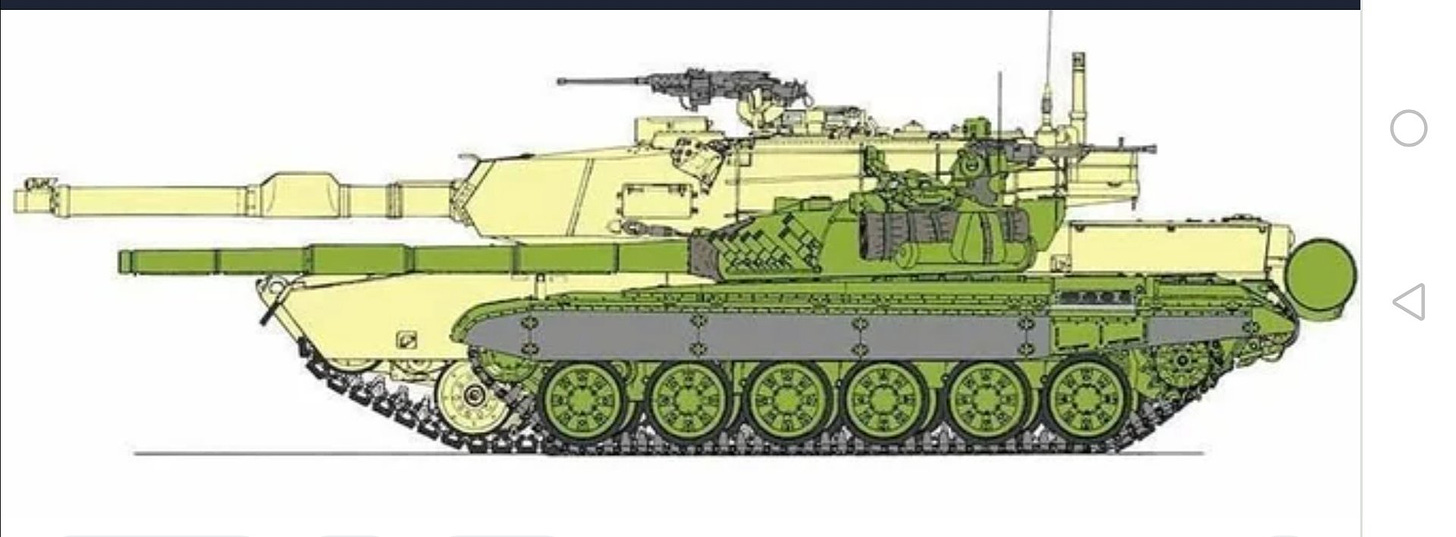
Also, the 3 man crew gives Russian tanks a much smaller and lighter profile, once again aiding in their versatility and usefulness in all combat conditions. Western tanks need a large crew of 4, making the tanks much larger, heavier, their engines therefore more complex and prone to break down. If need be, Russian tanks can effectively be operated by only 2 people—the commander can duplicate the gunner’s controls with the flick of a switch, so all you need is a driver/commander, or driver/gunner. And it’s been demonstrated to work, several videos from Donbass crews replaced the gunner’s seat with a frontline reporter, and the tank functioned perfectly well, firing at enemy positions with just the two other crewmen.
Last year, during critical NATO exercises the premiere German Puma IFV (Infantry Fighting Vehicle) failed spectacularly. Literally, every single one of the 18 Pumas had major malfunctions and critical systems failures. Every single one. Even more so than the U.S., European militaries are not meant for anything even approaching a ‘Total War’ scenario. Not only are the failures a result of underfunding, but a product of decades of wayward martial philosophies, which privileged high-cost systems built for ‘limited war’ scenarios.
The entire German armed forces has 213 total main battle tanks, the UK ~158 active, and France ~178. Russia has 3000-5000 active, with ~13,000+ total, counting storage. Only the U.S. even begins to approach such readiness levels, with around 2500 active and 5000+ total (few realize that the majority of those in storage are very old M1A1’s). The numbers in other systems (light armor, combat planes, etc.) scale similarly between countries. From any standpoint you look at it, Western militaries have not been built around the concept of a “total” peer war. The total MBT counts for top Western countries are a week or two worth of losses in a high-intensity peer conflict.
One need only to look at the Leopard 2 disaster that befell NATO-member Turkey, during an incursion into ISIS-controlled Syria:
The ‘top-tier’ Western tanks were picked off as easily as if they were Saddam’s knock-off T-72 ‘Asad Babils’, presaging the types of losses Western forces could expect against an actual peer foe with modern weaponry.
But going back for a moment to crew sizes, the American M777’s handed over to Ukraine require a whopping 8 man crew to operate properly. Here a ‘speedy’ Ukrainian team shows their operations on the system with all 8 positions. Meanwhile, a comparable Russian D-30 gun crew does a breakdown in roughly the same time, but with half the men per gun. There’s an anecdote about the Somali Battalion legend, commander ‘Givi’, who taught one of his recruits to shoot a D-20 howitzer at UA positions in the Donetsk Airport by himself. That’s right—a single man loading, aiming, and operating the howitzer—because in Total War, necessity is the virtue which begets victory.
In areas where it lends itself to more utility, Russia shrewdly invests in automation, and shuns it in areas where too much of it makes logistics operations overly reliant and vulnerable to breakdown.
Take the instance of Russian autoloaders vs. the cumbersome manual-loading of Western tank counterparts.
Russian MBT’s (Main Battle Tanks), too, can be quickly and conveniently snorkeled for safe underwater operation—giving them the rare ability to traverse riverbeds.
Most Western tanks on the other hand don’t readily have this ability. Some have tested it, or have the ‘theoretical’ means, but it’s usually a far more involved and uncertain process, requiring lengthier modifications, and not something they train for or keep as standard operating procedure.
Similarly, almost all Russian light armor is amphibious, and built for ultimate usefulness and versatility.
From the venerable BMP-2’s and BMP-3’s with their track-propulsion, to the new Kurganets-25 with dedicated water-jets, Russian light armor is universally amphibious, and instantaneously so.
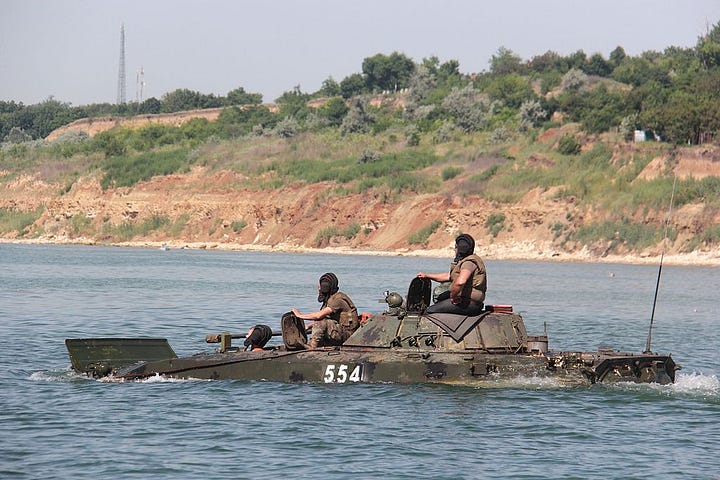
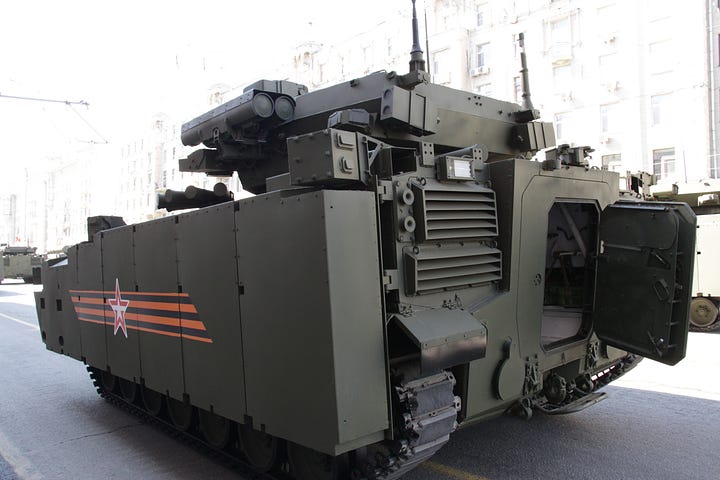
Equivalent Western systems like the Bradleys, CV-90’s, etc., are either only amphibious with substantial preparation (like adding ‘water barriers’ and ‘special pontoons’) or not at all like in the case of Germany’s Puma and others.
Russian systems are also made to be airborne and air-droppable for easy insertion anywhere on the frontline or behind it. The universality of these systems ensures the ability to cross any frontier, by air, sea, and land. The easy use, with little to no preparation, allows the mastery and utilitarian adoption in record time, without the extended training periods often associated with Western tech (which Ukrainians are now experiencing).
Russian systems often have many such ‘hidden’ utilities and amenities which give them increased real-world usefulness over Western counterparts. In ‘Total War’, a system must have ultimate universality, real-world functionality, and ease of use. It’s not stripping things to their bare-boned essentials for the sake of ‘cheapening’ the cost for some mindless ‘Stalin-esque’ idea of mass production, but rather the purposeful design choice for functional essentials and interoperability.
Take this 2S25 Sprut-SDM1, for instance, which shares a hydropneumatic suspension with several Russian systems, including the new Kurganets-25, and the older BMD-3 and BMD-4. Watch its ability to lower itself for transport/air-drop viability, then pop open waterjets to fire its massive 125mm cannon even as it traverses the river. The West has no such comparable systems focused on real-world universality and modularity.
This further extends to the more holistic aspects of armies and how they function—the logistical architecture of the mechanized forces which form the backbone of an armed forces. This thread from a twitter-celebrated American military expert is very enlightening—though probably not in the way he intended.
He compares the American military logistics machine to a Walmart distribution center, using the example of a corporate hub as the ideal standard by which all ‘efficient’ militaries should be judged, fawning over the extremely specialized, fancy-acronym’d equipment like HIAB cranes, FMTV’s and MHE’s, etc., that make up the lifeblood of American mechanized force logistics. Such sleek automation is, in the American view, the paragon of how true, ‘Modern Armies’ should be run. Of course, that’s one of the problems, Western militaries are run more like corporations than fighting forces (cue the ESG, CRT, DEI, etc., currently taking over Western militaries)
But that’s the problem, Western militaries rely on a host of ‘specialized equipment’ even in the backend of their operations. One American commentator once harshly judged a video showcasing a Russian artillery battalion ammo dump. In the video, the soldiers could be seen stacking walls of olive-colored ammo crates by hand. The American snobbily dismissed it as an example of Russian backwardness, boasting how similar American formation depots utilize a variety of heavy-duty loaders and fancy specialized cranes with very impressive sounding names, typical of the soulless corporate culture parlance, like Super-High-Mobility-Heavy-Expanded-Tactical-Mine-Resistant-Ambush-Protected-Crane-Enabling-Ultra-Palletized-Load-System-X5000, or conveniently shortened by Lockheed Execs to ShMheTMRapCeuPLSx5000.
In the very thread quoted above, you can likewise see the pointing and laughing at the following photo comparison of a Russian logistics offload in Ukraine to a U.S. depot.
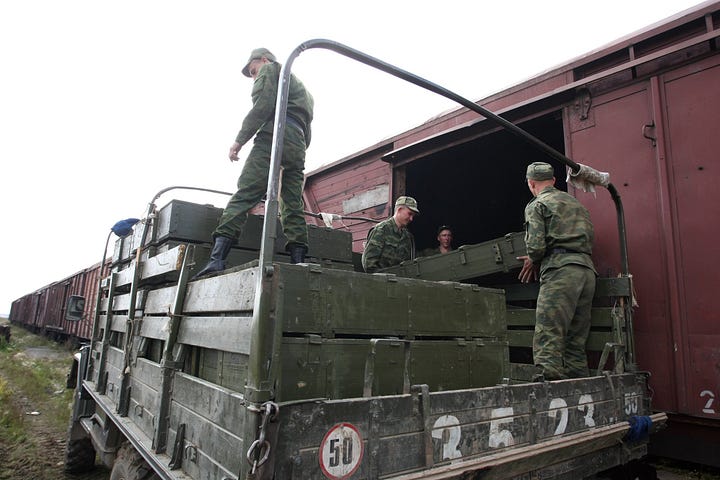
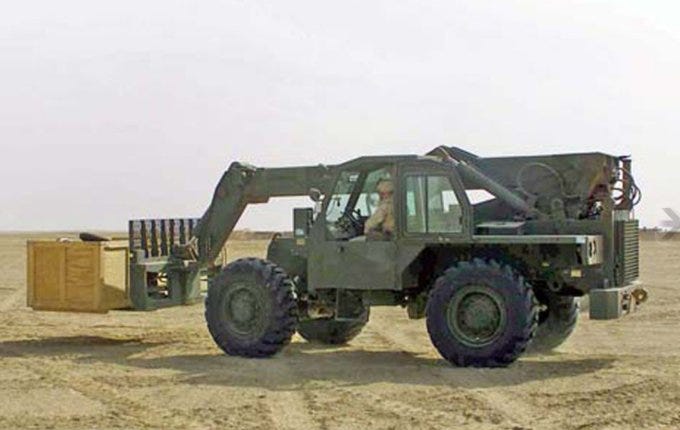
The problem with relying on such heavy mechanization is that in a real, high-intensity peer conflict, i.e. ‘Total War’ scenario, most of the stuff will be hit, break down, have parts/fuel/supply/wear-and-tear and maintenance issues, etc. Not to mention, for a variety of reasons, fighting in the modern ISR dominated battlefield, having so many electronic and heat signatures would make you glow like a lavalamp from a variety of space/drone/plane based observational platforms. The U.S. simply never had to deal with those limitations because they’ve never dared fight an opponent even remotely approaching those capabilities.
Just watch this illuminating Dr. Philip Karber presentation to the U.S. Army West Point cadets, particularly from about the 26 minute point onward:
He mentions many of the points of how the U.S. army’s reliance on certain key luxuries would redound heavily against them in a confrontation with a real power like Russia.
Few clips better highlight the disparities in economy and utility of design mindsets than this one comparing Russian 2S1 Gvozdika Self-Propelled Artillery crews to those of the American M109 Paladin. Can you begin to envision the problems the second crew would have in a high-intensity Total War scenario? Just take a look at the sheer labyrinthine maze of protocol initiations and hand-offs that emblemize the West’s reliance on systems antithetical to the Total War creed. Imagine these same crewmen under high pressure, no sleep, having fought for months without rotation, famished and exhausted, with the pounding cannonades of a peer-level adversary’s artillery rumbling off around them, having to pucker through this firing pageant?
Another example is the loading of a Russian Bm-21 Grad vs. American HIMARS.
Compare the effortless two man job of sliding Grad rockets into a simple slot, to this gargantuan-looking undertaking, which seems to require an entire engineering team, several cranes, jacks, generators and porta-potties, just to load one HIMARS unit. (M270 here, but same thing).
Look at the sheer number of movable components, prone to wear-and-tear and breaking under high-stress/intensity conditions. The fact is, everything in the Western military ecosystem is laborious, overburdened, and bloated with impracticality.
Sure, the comparison is slightly disingenuous for the fact that the Grad is a much smaller 122mm rocket system vs. the 227mm of the M270/HIMARS, and Russia’s own larger systems like the Bm-27 Uragan and Bm-30 Smerch do have mechanized loaders of their own. But the point is, Russia diversifies and retains much more simplified systems like the Grad for situations when the others can’t cut it, whereas the U.S. exclusively relies on the ‘high-tech’ ones.
Ultimately, it’s hard to imagine how, with a straight face, some Westerners can accuse Russia of being incapable of proper supply/logistics operations, yet in the same breath bemoan that it expends more shells per day than the entire Western military bloc is able to produce in a month. Do you know what level of sheer organizational prowess lies behind the ability to efficiently resupply 60,000+ shells per day, day in and day out? The operation is incalculably massive; and since we still hear the daily screechings from the West about Russia’s shell overmatch, it can only mean they’re competently fulfilling all logistical demands, with or without the fancy Heavy-High-Mobility-Advanced-Mine-Resistant-Palletized-Auto-Crane-2000 Lockheed money-sink boondoggle robotic jib arm.
In fact, few are aware that Russian, for instance, has launched more cruise missiles in the first year of the Ukraine conflict than U.S. has launched of its famed ‘Tomahawks’ in the entirety of the Tomahawk’s four decades’ lifespan. Back in August, Zelensky admitted Russia has launched over 3,500 missiles thus far, and since then Russia has only upped the intensity, which means by this point the count is likely over 5,000. Meanwhile, the U.S. has launched a total of 802 Tomahawks during the entirety of the 2003+ Iraq War, and around 2,300 total since the Tomahawk’s inception in the early 80’s.
The point made is one of sustainment, production, and manufacturing power. The Western powers like to scoff and balk, or jeer at ‘the gas station masquerading as a country’, but in actuality Russia’s commitment to the ‘Total War’ principle has enabled it to eclipse Western manufacturing potential in many key areas, which is exemplified by the munitions spent.
It seems the U.S. is only just now waking up to the concept of sustainment, as if it never even knew it existed. Headlines like the one from this article are sounding the clarion call, and demonstrating how decades of U.S.’s ‘limited war’ luxuries have resulted in the total amnesia of how real wars are fought.
In fact, the U.S. has a stockpile of about 4,000 total Tomahawks presently, and in recent years, they’ve only produced around 100-150 of them per year. It’s no surprise then, as pointed out in our previous article, that the Western bloc repeatedly ran into guided munitions shortages as recently as the Libya conflict in 2011. Think about it this way, if Russia has launched over 5,000+ cruise missiles at Ukraine so far, which has not even budged them, imagine what 4,000 Tomahawks could do to Russia? In a direct clash, the U.S. would run out of all PGM’s in short order—what would they rely on after that? Artillery? We’ve now seen how few shells they can produce even after ‘max ramp-up’ (which takes years).
Though it may seem tangential, the point highlights Russia’s commitment in all domains of their military to the ‘Total War’ principle. Be it from the ergonomics and ease-of-use of systems, to the sustainment and manufacturing potential that is the backbone of it all.
To some extent, it stems from the age-old Russian ethos, tinged with hints of nihilism and realpolitik, which evinces a certain artless and un-idealized view of life that differs from the oftentimes hollow optimism championed in the West. It’s a mentality rooted in figures like Dostoevsky, and concepts like ‘nihilism’, which itself was popularized by the Russian writer Turgenev.
That’s not to veer into philosophical debate, but rather to point out the certain strain of ‘dark realism’, embodied in the Russian tradition, which views life at its most unvarnished and habitual, and extends to a commitment to ‘realities’ on the ground, harsh as they may be. Thus, in the Russian mindset, ‘Total War’s’ acknowledgment that an existential conflict against a peer foe would necessarily result in mass death—and require systems which can properly function, be picked up quickly and maintained under such conditions—is not an admission of some caricaturized trope of ‘expendable Russian soldiers’, but rather the realpolitik-style understanding of the innate realities of existential style conflicts.





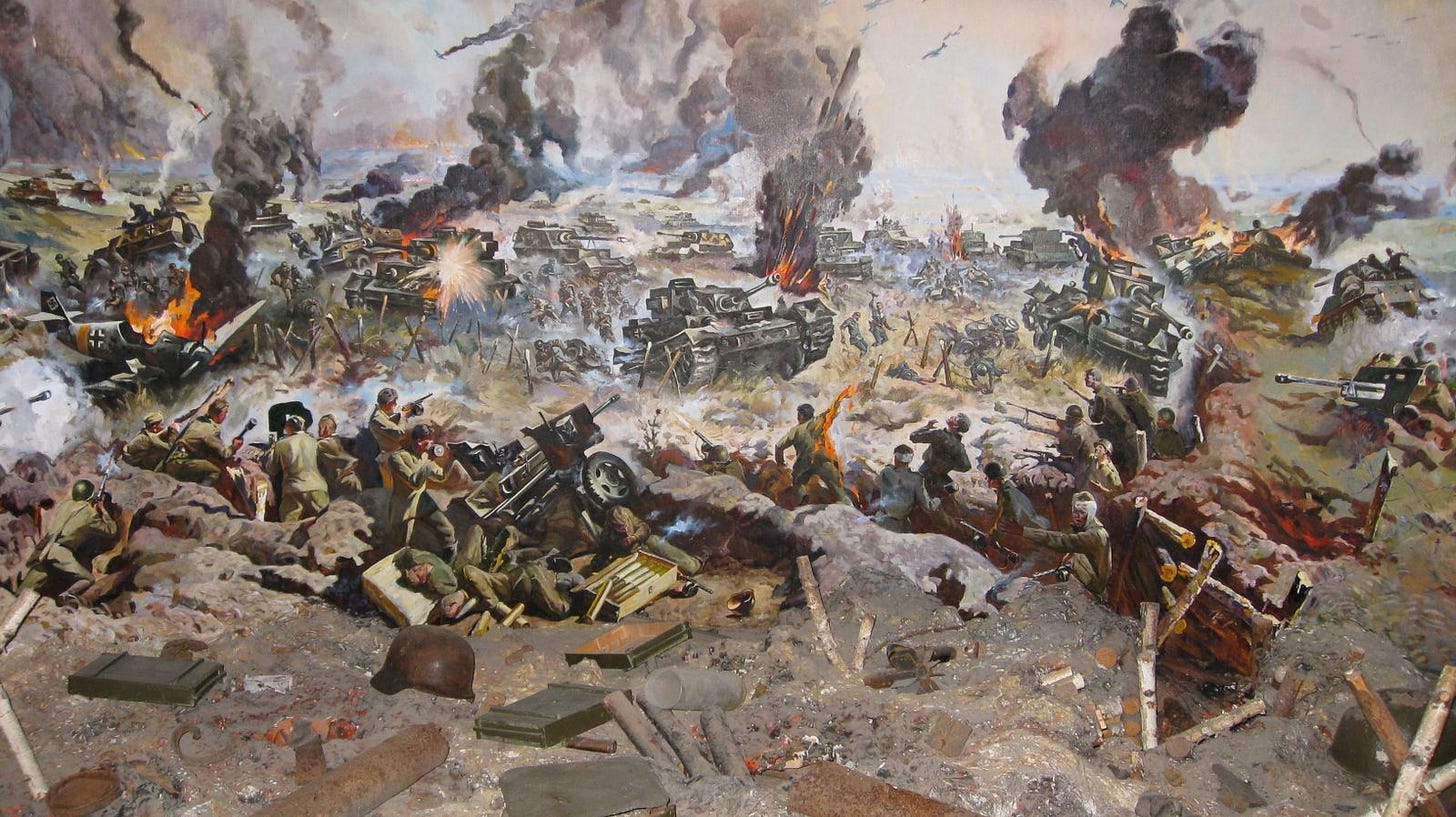
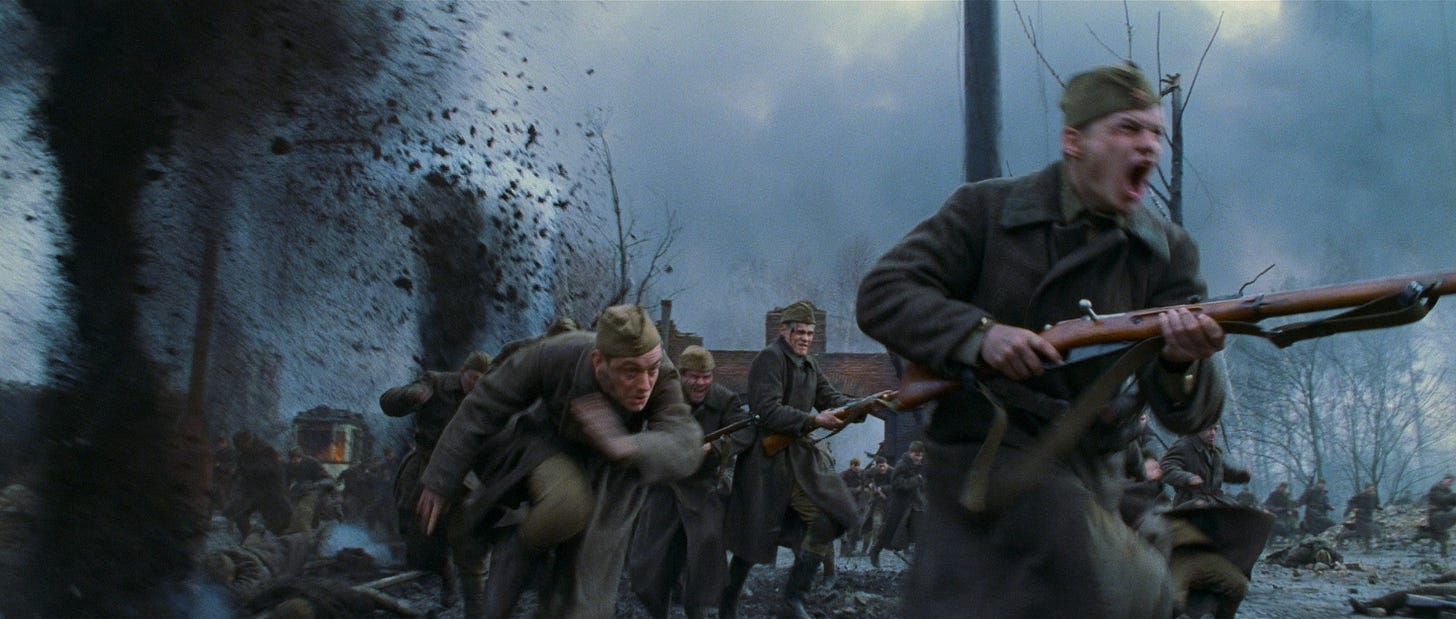



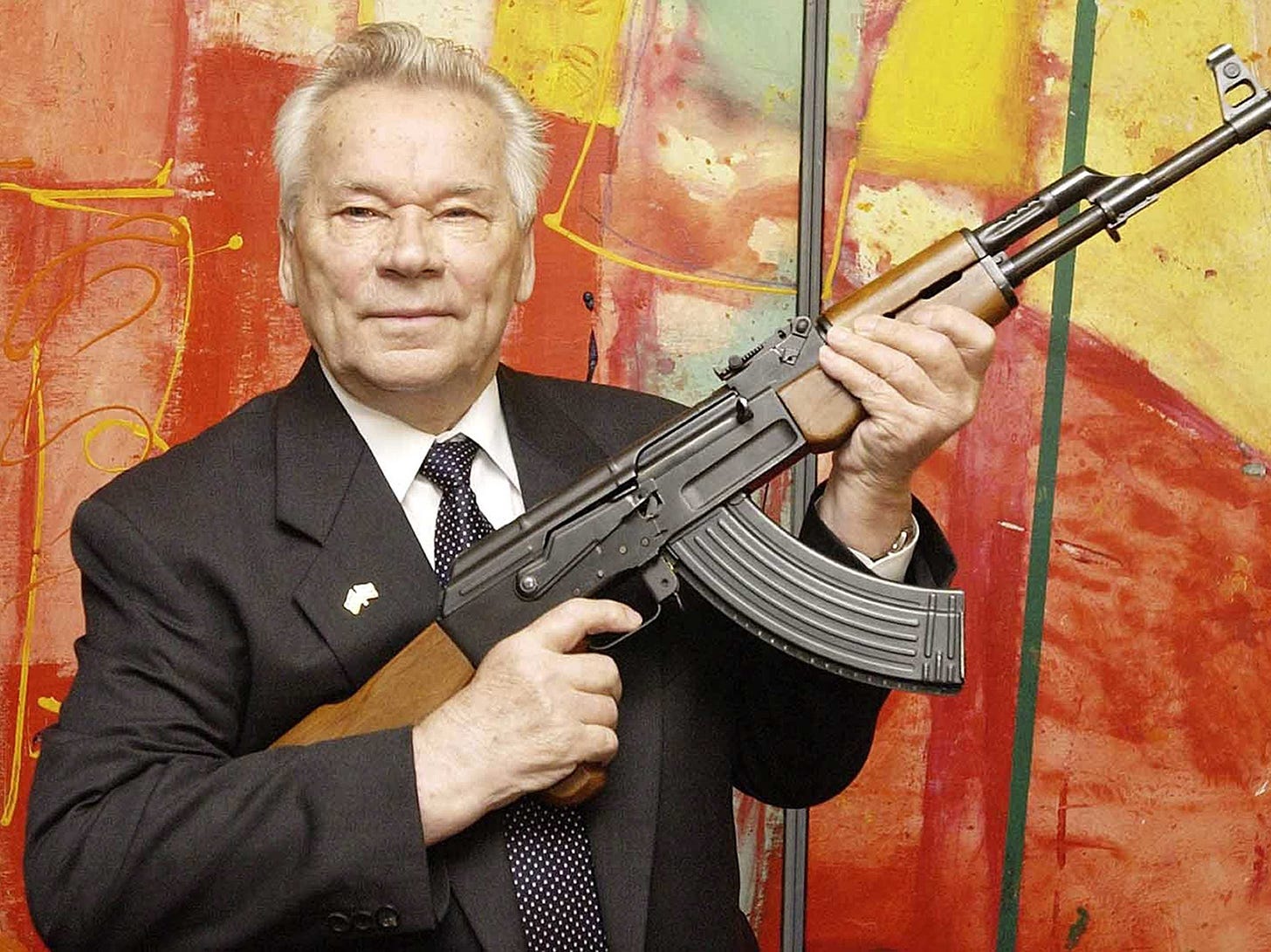





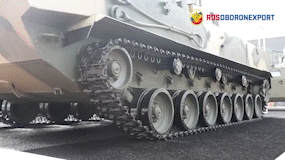
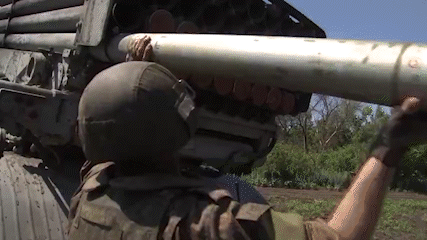

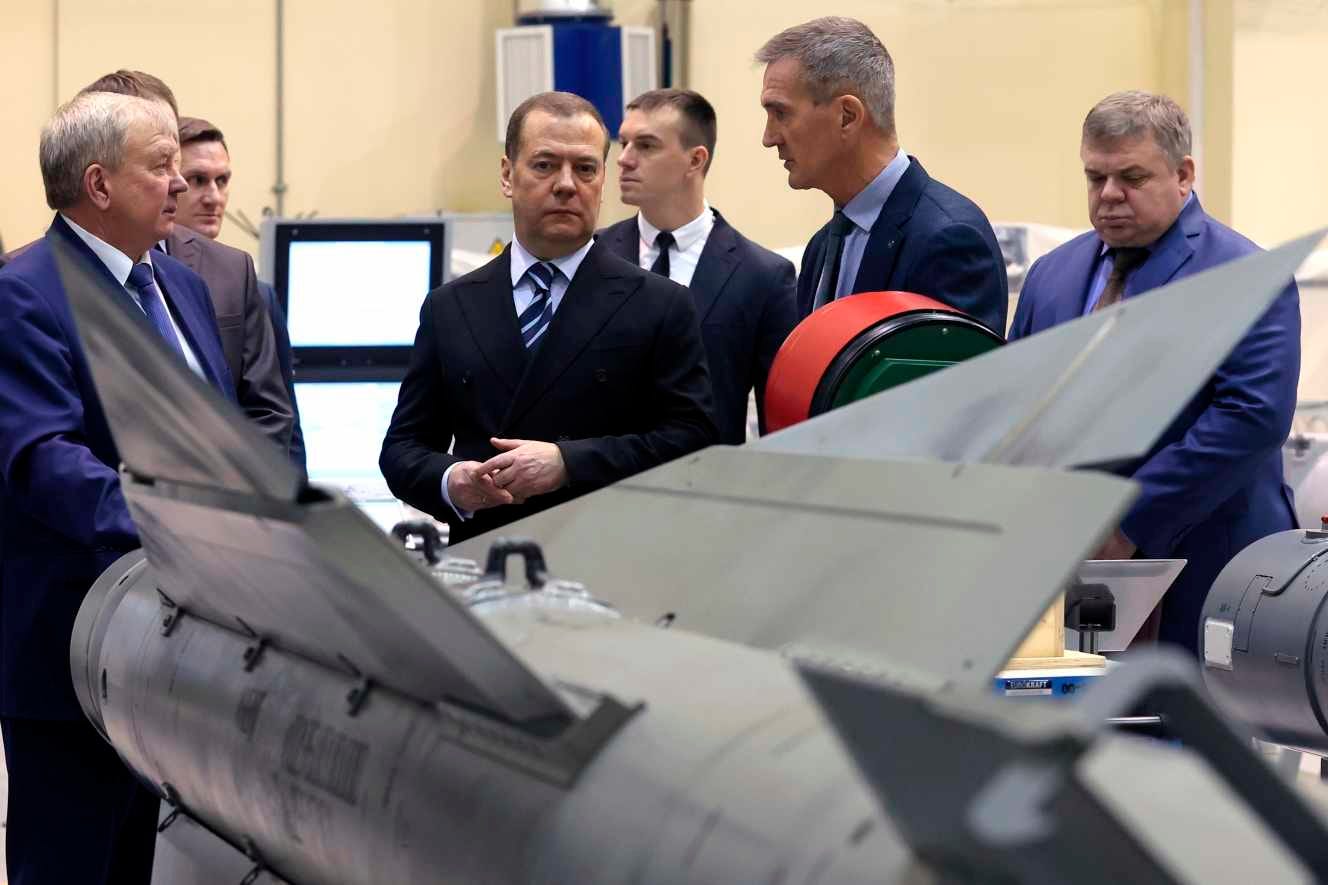
From speaking to friends who have served in Iraq or Afghanistan (or both), I can attest to the wholesale orientation of Western forces towards a SOCOM style of operations. High tech, exceptionally well trained super soldiers supported by overwhelming signals and surveillance and airborne supremecy. I certainly don't envy a force facing against SAS/SEAL/Delta or similar on their terms
But none of that matters if you're pinned in a trench by sustained 155mm fire against an adversary with near-peer ISR and a shell lands in your lap. You're as dead as the next guy.
A simply superb analysis. I stand, or rather huddle over my computer in awe. I have written article which allude to the main ideas in your article but never in such detail, nor so comprehensively. Well done. Of particular interest to me was the historical context you elaborated on. This has been mentioned by many others (including Putin himself) but never with such clarity. Russia is pragmatic because it must be. For, war is existential. For Americans, quite the opposite as I emphasize in my own articles. The key factor is, as you say, history -- which is also the key to Russia's determination to fully demilitarize and denazifiy -- effectively neuter -- Western "Ukraine". I put "Ukraine" in quotation marks because I am not sure what to call this state, which has little historic basis for its existence or legitimacy. Putin does not want to occupy the area west of the Dniepr, but he will surely welcome regions that want to join Russia. "Denazification" -- ie. tribunals and trials -- will drive those supporting the current regime to flee. Russia has a lot more to offer than the West which only seeks to exploit the region. So, yeah, you might see a rather smallerl Western "Ukraine" in the end, landlocked and neutral and dependent on the rest of Novorossiya.
As for military technologies, the Russians don't have money to waste. Nor do they treat weapons as consumer items as I suggest here: https://julianmacfarlane.substack.com/p/much-ado-about-nothing-western-wunderwaffen.
I was particularly impressed by your analysis of Western misunderstanding of Russian concern for the safety of its troops, which obviously influences a.) strategy in the Ukraine b.) design of weapons.
A good example is the Abrams. To big, too heavy to cross a bridge in Ukraine. Needs jet fuel . Breaks down every 100 km. Too expensive to use. Ditto the F35-- still not really fit for combat. Again too expensive to use; too expensive to lose. l And "stealthy:' only under the very best circumstances. The Su47 does "stealth" a lot better -- assuming that no matter what an aircraft is detectable as the Serbs proved shooting down an F117.
I am working through your articles. Some are long and I need to read them a couple of times to digest, with my weak little brain.